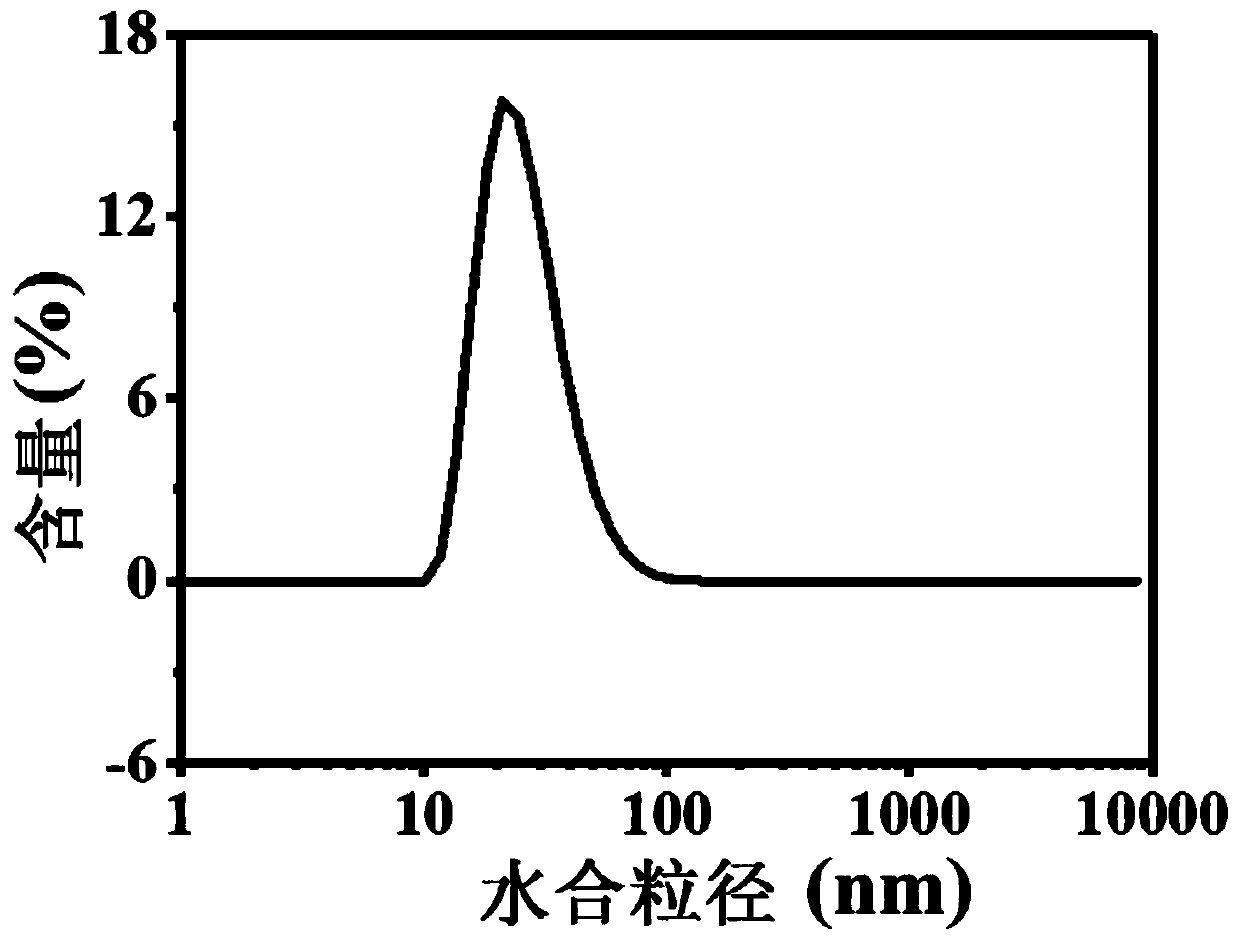Near-infrared second region fluorescent nanoprobe based on black phosphorus as well as preparation and application of near-infrared second region fluorescent nanoprobe
A fluorescent nanoprobe and near-infrared technology, applied in the field of biomedicine, can solve the problems of less research on fluorescent properties, and achieve the effects of easy promotion, high yield, and broad application prospects
- Summary
- Abstract
- Description
- Claims
- Application Information
AI Technical Summary
Problems solved by technology
Method used
Image
Examples
Embodiment 1
[0047] Weigh 1.00g of red phosphorus into a 100mL stainless steel ball mill jar, add stainless steel beads (the mass ratio of red phosphorus to ball mill beads is 1:150) to seal, fix the ball mill jar in the ball mill, and then ball mill at a speed of 500r / min for 96h , to obtain black phosphorus nanoparticles powder. The X-ray diffraction patterns (XRD) of raw material red phosphorus (RP) and product black phosphorus (BP) are shown in figure 1 .
Embodiment 2
[0049] 4 g of oleylamine (molecular weight = 267 Da) was added to the black phosphorus nanoparticle powder prepared in Example 1, and ball milling was continued for 72 h. The obtained product was dispersed in tetrahydrofuran and centrifuged at a speed of 1000 r / min to remove the precipitate. An appropriate amount of ethanol was added as a precipitating agent to aggregate black phosphorus-oleylamine (BP-OM) nanoparticles to form insoluble matter, and then centrifuged at a speed of 5000r / min for 5min, and the precipitate was collected and redissolved in tetrahydrofuran. The obtained solution was centrifuged again at a speed of 1000 r / min, and the supernatant, namely the purified BP-OM nanoparticles, was taken. figure 2 It is a particle size distribution diagram of BP-OM nanoparticles in tetrahydrofuran, and its average particle size is 21nm. image 3 It is the transmission electron microscope picture of BP-OM, and the statistical average particle size is 14nm.
[0050] Take t...
Embodiment 3
[0052] Disperse 50mg of phospholipid-polyethylene glycol (lipid-PEG) molecules (the molecular weight of the PEG segment is 2000Da) in the tetrahydrofuran solution of the BP-OM nanoparticles prepared in Example 2. After the tetrahydrofuran is completely volatilized at room temperature, add ultrapure water Stir vigorously for 1 min. Then centrifuge at a speed of 3000r / min for 10min to remove insoluble matter, and dialyze the obtained supernatant to remove excess lipid-PEG. The molecular weight cut-off of the dialysis bag is 8000-100,000Da. After freeze-drying, the OM and lipid-PEG double-modified black phosphorus nanoparticles powder that can be stored for a long time was obtained, which was named BP-OM@lipid-PEG nanoparticles. Figure 5 It is the hydrated particle size distribution diagram of BP-OM@lipid-PEG nanoparticle aqueous solution, and its average hydrated particle size is 120nm. Figure 6 It is a transmission electron microscope picture of BP-OM@lipid-PEG nanoparticles...
PUM
| Property | Measurement | Unit |
|---|---|---|
| particle diameter | aaaaa | aaaaa |
| particle diameter | aaaaa | aaaaa |
| particle size | aaaaa | aaaaa |
Abstract
Description
Claims
Application Information
 Login to View More
Login to View More - R&D
- Intellectual Property
- Life Sciences
- Materials
- Tech Scout
- Unparalleled Data Quality
- Higher Quality Content
- 60% Fewer Hallucinations
Browse by: Latest US Patents, China's latest patents, Technical Efficacy Thesaurus, Application Domain, Technology Topic, Popular Technical Reports.
© 2025 PatSnap. All rights reserved.Legal|Privacy policy|Modern Slavery Act Transparency Statement|Sitemap|About US| Contact US: help@patsnap.com



